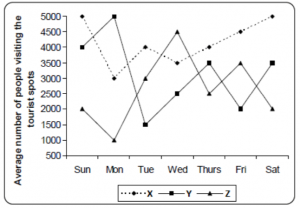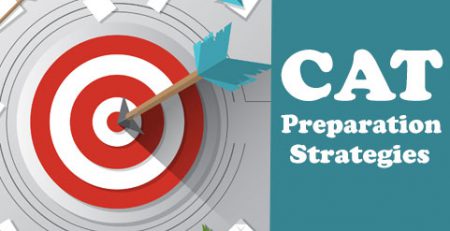Strategy to Crack Data Interpretation for CAT
Strategy to Crack Data Interpretation for CAT
An Overview
The Data Interpretation section of CAT is divided into two parts- Data Interpretation and Data Sufficiency
1) Data Interpretation
In this section intensive calculation is to be done. It consists of graphs, charts, and tables from which you have to analyze data.
For Preparation Join our courses
Aspirants before the official exam should be familiar not only with the question types they will see on the exam but also with the different ways the exam may present data:
-
- Line graphs
- Bar graphs
- Pie charts
- Scatter plots
- Tables
- Multiple data sources
Also read: All you should know about CAT Data Interpretation
Aspirants should have good knowledge as well as comfort level with these concepts. These consist primarily (but not exclusively) of the following:
- Percentages
- Averages
- Ratios
- Proportions
- Data comparison
Tips to crack Data Interpretation
- Read the Questions Carefully:
In Data Interpretation questions will consist of statistics, numbers & diagrams that might look difficult but are actually not at all difficult to solve. The scarier a DI set, the easier it is to solve. So don’t lose heart and lose your confidence. Don’t start finding the easier-set.
- Improve your Calculation Speed:
The Data Interpretation section needs much calculation. Such calculations can waste your time. So learn shortcuts and strategies. Vedic Maths is the best technique that can be used to save time in complex calculations. So it is good to learn Vedic Maths Techniques which makes Data Interpretation more easy and fun-loving.
- Know all types of Data Interpretation questions:
When you will start practicing DI questions for a while, you’ll notice that there are different types or formats of questions in this section. There will be bar charts, tables, pie charts, etc. There will also be questions where a lot of text/information will be provided in 1 long paragraph. Start reading newspapers which have data interpretation bar graphs, line graphs.
- Day-to-day preparation
It is necessary to practice Data Interpretation questions at least once a day. Follow one of the strategies that is at least one question of Data Interpretation will be enough to crack Data Interpretation in CAT.
Direction to Solve:-
Study the following chart and answer the questions.

The above line graph gives information about the approximate number of people visiting three tourist
places X, Y and Z.
1. Our aim is to arrange a picnic for 3 consecutive days so that the places to be visited remain less
crowded. Which one is the best option? (one day – one spot)
A. SUN-Z; MON-X ; TUE-Y
B.SUN-Y; MON-Z ; TUE-X
C.MON-Z; TUE-Y; WED-X
D. TUE-Y; WED-X; THURS-Z
2. On which of the following day maximum people visit these three tourist spots?
A. Saturday
B. Sunday
C. Friday
D. Wednesday
3. If fluctuation is defined as absolute value of change in the number of visitors, which two
consecutive days show the minimum total fluctuation in the total number of visitors?
A. Sun–Mon
B. Fri–Sat
C. Wed–Thurs
D. Thurs-Fri
2) Data Sufficiency
This is the second section of Data Interpretation for CAT. Data Sufficiency questions consist of 2 statements and are generally in form logical puzzles. You have to select a question in this form. First, if one statement is enough to answer the question. Second, Both the statements are true to answer the question. This type of question needs much practice and it also needs time. So prefer them to solve after you have solved each and every question.
Direction to Solve:-
In each of the questions below consists of a question and two statements numbered I and II given below it. You have to decide whether the data provided in the statements are sufficient to answer the question. Read both the statements and
Give answer
- (A) If the data in statement I alone are sufficient to answer the question, while the data in statement II alone are not sufficient to answer the question
- (B) If the data in statement II alone are sufficient to answer the question, while the data in statement I alone are not sufficient to answer the question
- (C) If the data either in statement I alone or in statement II alone are sufficient to answer the question
- (D) If the data given in both statements I and II together are not sufficient to answer the question and
- (E) If the data in both statements I and II together are necessary to answer the question.
| 1. | Question: How is ‘No’ coded in the code language?
Statements:
|
|||||||||
|
| 2. | Question: Who among P, Q, T, V, and M is exactly in the middle when they are arranged in ascending order of their heights?
Statements:
|
|||||||||
|
| 3. | Question: Which code word stands for ‘good’ in the coded sentence ‘sin co bye’ which means ‘He is good’?
Statements:
|
|||||||||
|
| 4. | Question: What is the numerical code for ‘water’ in a certain code?
Statements:
|
|||||||||
|
| 5. | Question: How many visitors saw the exhibition yesterday?
Statements:
|
|||||||||
|
I hope this article was helpful to you and you are motivated enough to kickstart your preparation.
Happy Preparation!!!!













